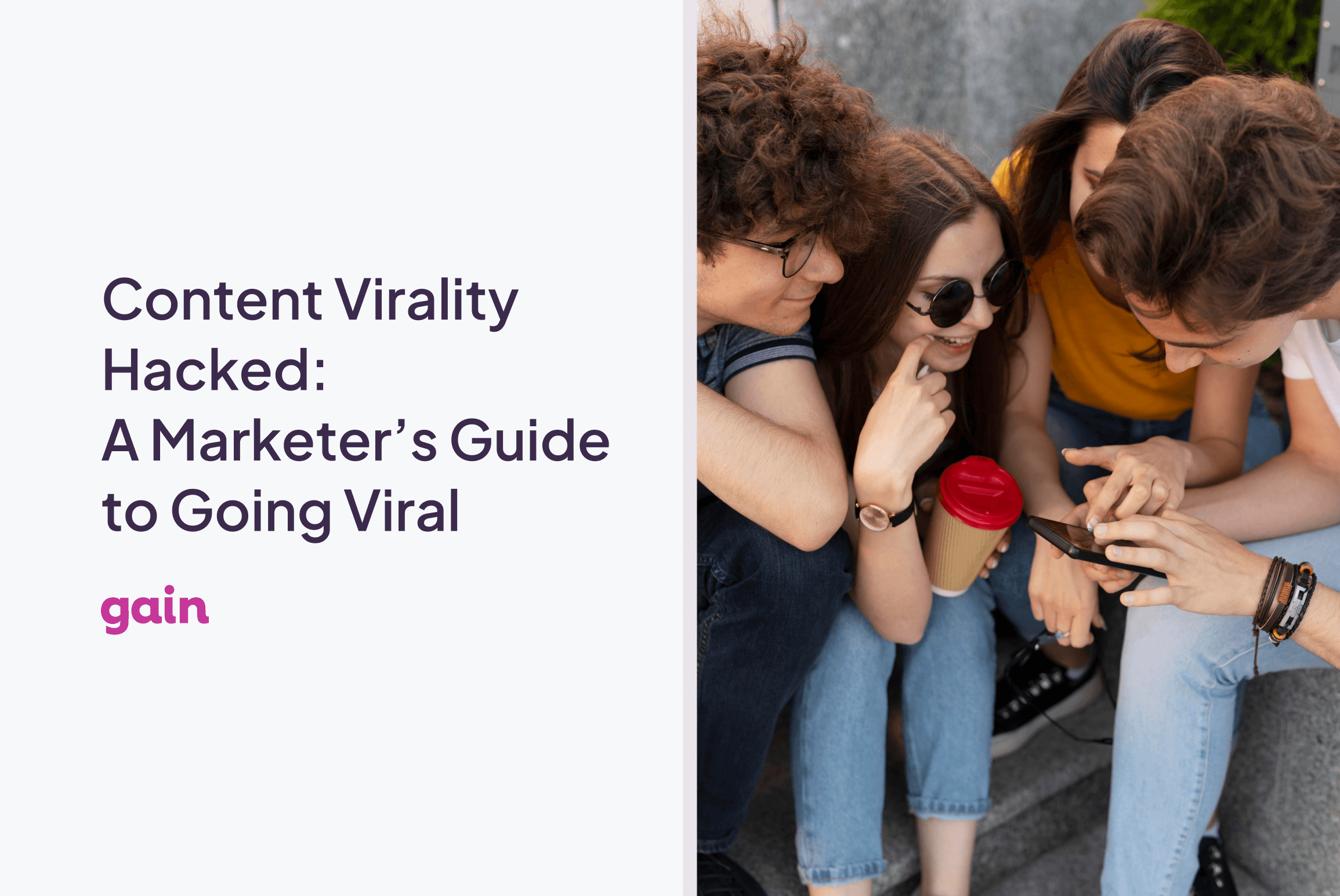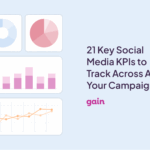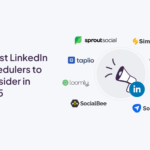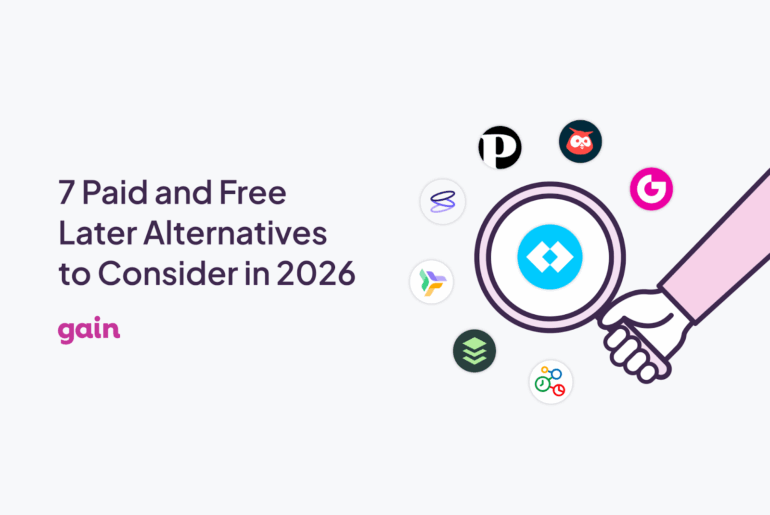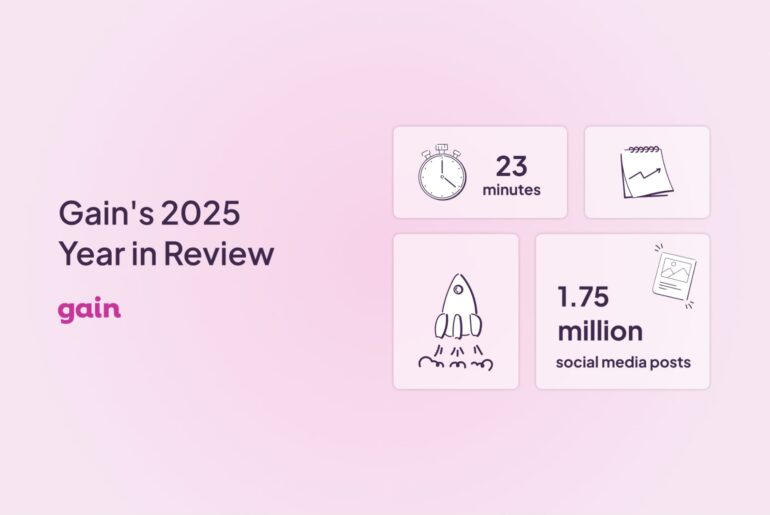Designed by Freepik
Everyone wants their content to go viral, but very few know how to make it happen. If your agency is running content for clients, you’ve probably asked yourself: What’s the secret sauce behind viral posts? And how can we make our clients’ campaigns go viral?
In this guide, we’ll give you a practical framework for creating content that spreads. Instead of relying on luck, we’ll break down the emotional and strategic elements that drive content virality across platforms. By the end of this guide, you’ll know how to:
- Tap into the psychology that fuels viral content
- Build content using proven viral ingredients
- Improve your odds of going viral across platforms
First of All, What Is Content Virality Exactly?
Content virality is when a piece of content rapidly spreads through shares, reposts, and engagement, reaching far beyond its original audience. Viral content typically evokes strong emotion, grabs attention quickly, and is easy to share across platforms.
Unlike paid reach, virality happens organically. It relies on users feeling compelled to pass the content along, often because it’s funny, relatable, surprising, or timely.
For agencies, understanding virality means learning how to engineer content that resonates deeply and spreads naturally.
What Makes Content Go Viral
While there’s no guaranteed formula for virality, the most successful content tends to share a few core traits. These elements work together to spark emotion, invite engagement, and make content easy to spread, especially when combined strategically.
Here are the key drivers behind viral content:
- Emotional triggers: Content that evokes strong emotions, like awe, humor, surprise, relatability, or even outrage, is more likely to be shared. These emotions create an instant connection that makes people want to pass the content on.
- Simplicity and clarity: As a rule of thumb, viral content is often incredibly simple. It delivers a clear message without requiring too much thinking or context. If someone can understand it within seconds, they’re more likely to share it. Overcomplicated content rarely goes viral because it doesn’t travel well.
- Timeliness and cultural relevance: Content that connects to current events, trends, or cultural moments has a built-in advantage. It feels urgent, fresh, and part of the larger conversation. Marketers who move quickly can tap into this momentum before the moment passes. For example, at any given time, a wide variety of topics are trending online. A quick glance at Google Trends can show what’s capturing attention around the world on any particular day.
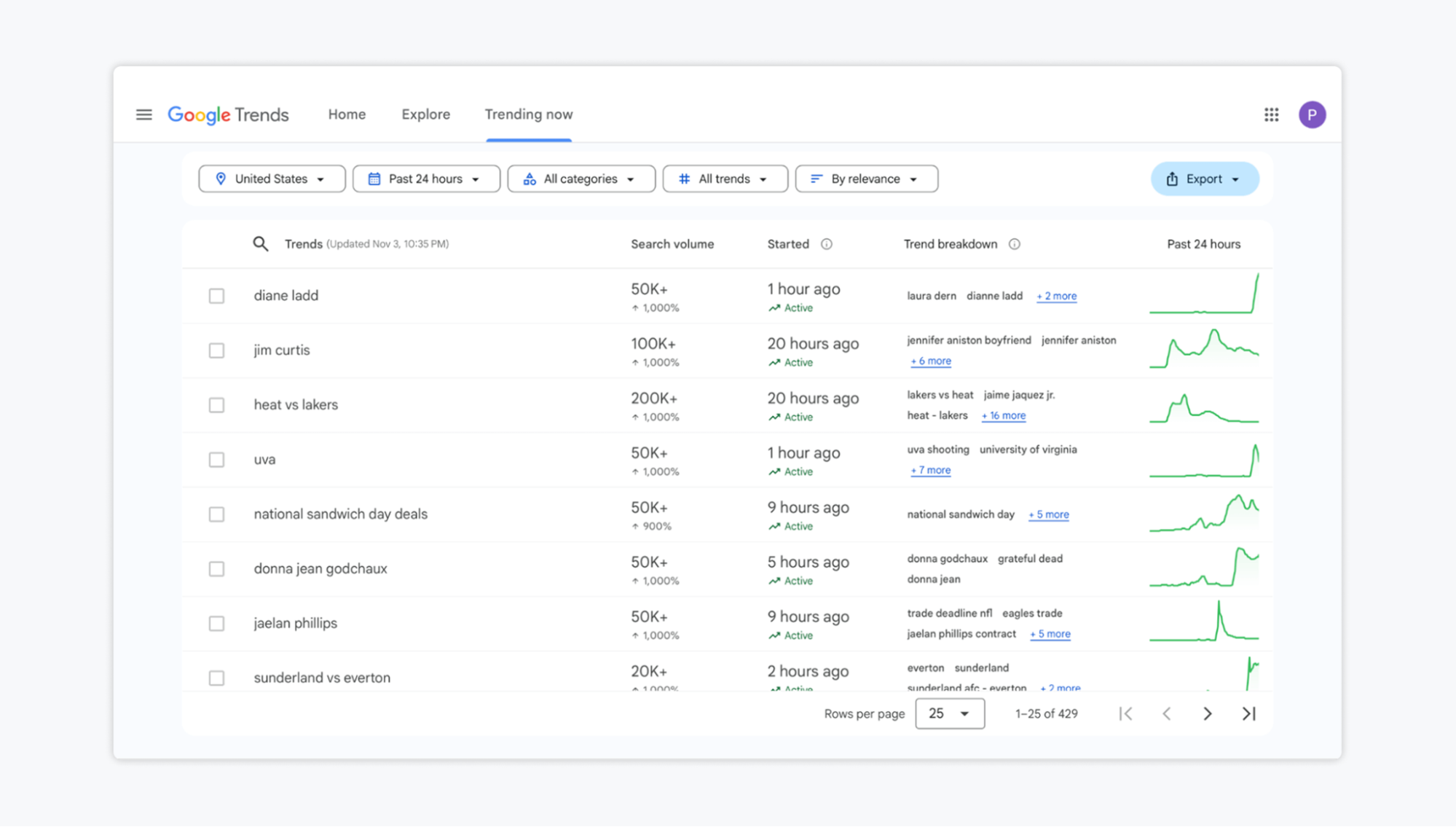
- Visual impact: Eye-catching content gets noticed first. Whether it’s bold design, a short video, or scroll-stopping graphics, strong visuals help your content stand out in busy feeds. Posts that look good are more likely to get shared, remembered, and engaged with. This matters even more on visual platforms like Instagram, TikTok, and Pinterest.
- Celebrity or influencer amplification: Working with celebrities or creators can significantly increase a campaign’s viral potential. When a familiar face or trusted voice is involved, audiences pay attention and are more likely to engage. That said, whoever you decide to collaborate with, the collaboration must feel natural and in tune with your or your client’s brand.
3 Real-world Viral Campaign Examples
Now that you understand the theory behind what makes campaigns go viral, let’s look at three real-world examples of content that absolutely exploded on the internet.
For each example, we’ll analyze what made the campaign go viral, so you can apply those lessons to your clients’ future campaigns.
1. American Eagle “Sydney Sweeney Has Great Jeans / Great Genes” Campaign
One of the most scandalous (and definitely viral) campaigns of 2025 came from American Eagle. The campaign used a pun on “great genes” → “great jeans” with Sydney Sweeney fronting American Eagle’s denim line. The visuals were bold and unapologetically sexy, and the internet lit up with mixed reactions.
From praise to backlash to memes, the campaign quickly became the talking point across TikTok, Instagram, and X (Twitter).
📣 What elements of virality did it feature?
- Controversy and emotion: Sparked debates on objectification, tone-deaf branding, and body image
- Striking visuals: Bold, high-gloss imagery made for Instagram and news headlines
- Strong hook: The “Genes/Jeans” pun was simple, provocative, and memorable, though many called it out for its racial undertones and insensitivity, which fueled even more online discussion
So, while many called this campaign a total social media failure, we can all agree that it had all the elements of virality.
2. Jet2’s Accidental Meme Takeover: #NothingBeatsAJet2Holiday
Jet2 is a UK-based low-cost airline and holiday company known for affordable European getaways. In 2025, they unexpectedly went viral – not because of a clever campaign, but because TikTok turned their upbeat summer advert into a meme.
The ad, featuring a sunny soundtrack and happy vacation footage, was quickly co-opted by users pairing the cheerful jingle with clips of cancelled flights, lost luggage, and general travel disasters. The contrast was hilarious (and incredibly shareable). The ironic hashtag #NothingBeatsAJet2Holiday took off, and instead of panicking, Jet2 leaned in by launching a branded challenge and even offering travel prizes.
📣 What elements of virality did it feature?
- Humor and irony: Audiences flipped the feel-good ad into sarcastic comedy
- Catchy soundtrack: The upbeat jingle became instantly recognizable and remix-friendly
- User-generated content: TikTok creators drove the trend with personalized twists
- Timely response: Jet2 embraced the moment instead of trying to control it
3. Dunkin’ × Sabrina Carpenter “Strawberry Daydream Refresher”
One of the most buzzed-about social campaigns of 2025 came from Dunkin’, which teamed up with pop star Sabrina Carpenter to launch the Strawberry Daydream Refresher. The campaign kicked off with a stylized video ad called “Dunkin’ Daydream Hotline,” featuring Sabrina as a retro phone operator in a dreamy pink-toned office, answering calls from “thirsty” fans.
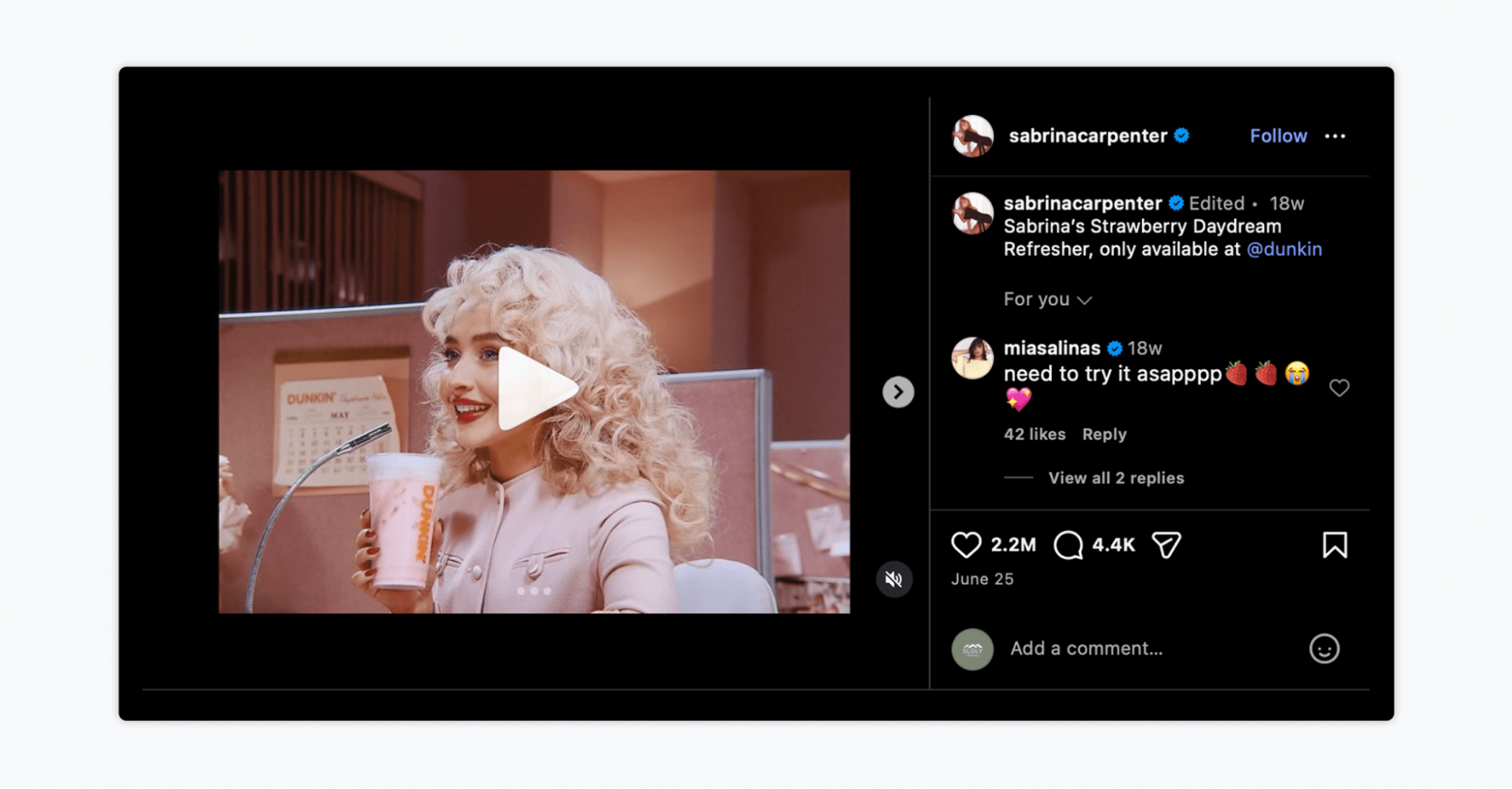
The campaign was packed with internet-ready visuals, playful innuendo, and a product that perfectly matched Sabrina’s personal brand. It trended quickly on Instagram and TikTok, with fans recreating the ad’s aesthetic, sharing screenshots, and racing to get limited-edition merch.
📣 What elements of virality did it feature?
- Celebrity influence: Sabrina Carpenter’s massive Gen Z fanbase instantly boosted visibility
- Striking visual identity: Soft pink hues, retro phones, and playful set design made it a screenshot magnet
- Sound-driven storytelling: The phone-call concept translated well to TikTok remixes and parodies
📖 Related Read: 5 Famous Social Media Campaigns to Take Notes On
Tactical Tips for Creating Viral Content
Viral content may seem spontaneous from the outside (as was probably the case with Jet2 airline), but most of the time, it’s carefully crafted. For marketers and social media teams, going viral starts with being intentional about how content is structured, designed, and delivered.
Below are some practical tips that will help you build posts that are easier to discover, more likely to be shared, and better aligned with how people consume content today.
Tip 1: Hook Your Audience
Whatever you’re creating, it needs a strong hook. Whether it’s the first line of a caption, a campaign slogan, or the opening second of a video, your content has to grab attention quickly. Structure it to keep people watching, swiping, or reading all the way through.
Tip 2: Design for Visual Stopping Power
Visuals are just as important as the message itself. As you’ll see in the viral content examples, many top-performing campaigns use clean, bold design and strong contrast to stop the scroll. In fact, it’s no surprise that short-form video and images are leading the way. HubSpot research shows they’re among the top content formats delivering the highest ROI in 2025.
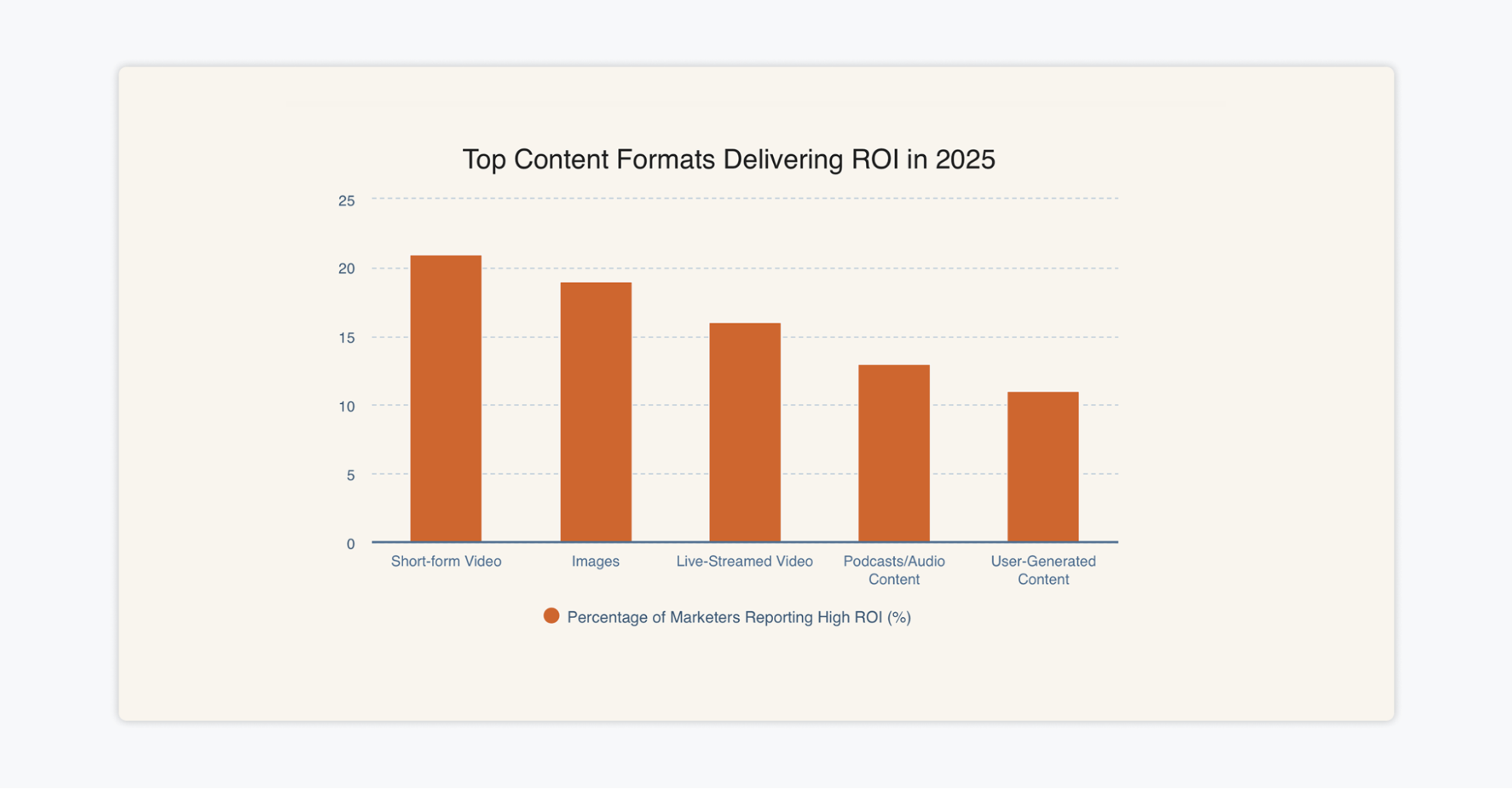
Strong visuals can carry the message on their own, but be careful not to overload them. Too many elements can dilute your campaign and reduce its chances of going viral.
Tip 3: Align with each platform’s algorithm
Each platform has its own logic, pace, and culture – and viral content plays by those rules. Understanding what each algorithm prioritizes, from watch time to engagement patterns, helps you optimize not just format, but also timing, structure, and creative style.
💡Pro tip: Create content for the platform, not just on it, and you’ll increase your chances of showing up in more feeds and earning organic reach.
Tip 4: Remove all sharing friction
Finally, make it stupid-easy to share your content. If someone has to think twice, click three times, or figure out what to do next, you’ve already lost them. Clear CTAs, one-tap shares, and remixable formats all help push your content further, faster.
FAQs
TikTok, Instagram Reels, and X (Twitter) are often where viral content spreads fastest due to their algorithmic feeds, remix culture, and strong sharing mechanisms. However, platforms like LinkedIn and Threads are also gaining traction, especially for professional, thought-provoking, or culturally relevant content. YouTube Shorts is another rising format for short-form virality, especially with younger audiences. The best platform depends on your audience and content style, but cross-platform planning often gives viral campaigns their widest reach.
Yes, B2B content can go viral, though it’s less common because it typically targets niche audiences and focuses on utility over emotion. However, when B2B content is framed around bold insights, thought-provoking commentary, or creative storytelling, it can generate significant reach, especially on platforms like LinkedIn, Threads, and even TikTok in some industries.
It certainly does. Controversy often sparks strong reactions and rapid sharing, which can help your campaign go viral, but you need to think carefully about whether that’s the kind of attention you want. Take American Eagle’s Sydney Sweeney “Great Jeans/Genes” campaign: it got massive reach, but also triggered backlash, with some people boycotting the brand entirely. Controversy can fuel visibility, but it also comes with a risk of reputational damage. Always weigh the potential upside against the possible long-term effects.
🎉 It’s a Wrap!
You now have a stronger grasp of what makes content take off – and how to apply that insight across your clients’ campaigns. From emotional triggers to platform strategy, the most viral content is created with intention, not luck.
Another key factor? Execution. The faster your team can move from idea to approval to publish, the more likely you are to catch the right moment. That’s where Gain can make a real difference.
Gain gives marketing agencies a simple, scalable way to manage social media for multiple clients with dedicated workspaces, automated content approvals, and effortless publishing across platforms. It’s everything you need to keep content moving and clients happy, without the chaos.
👉 Try Gain for free today!

